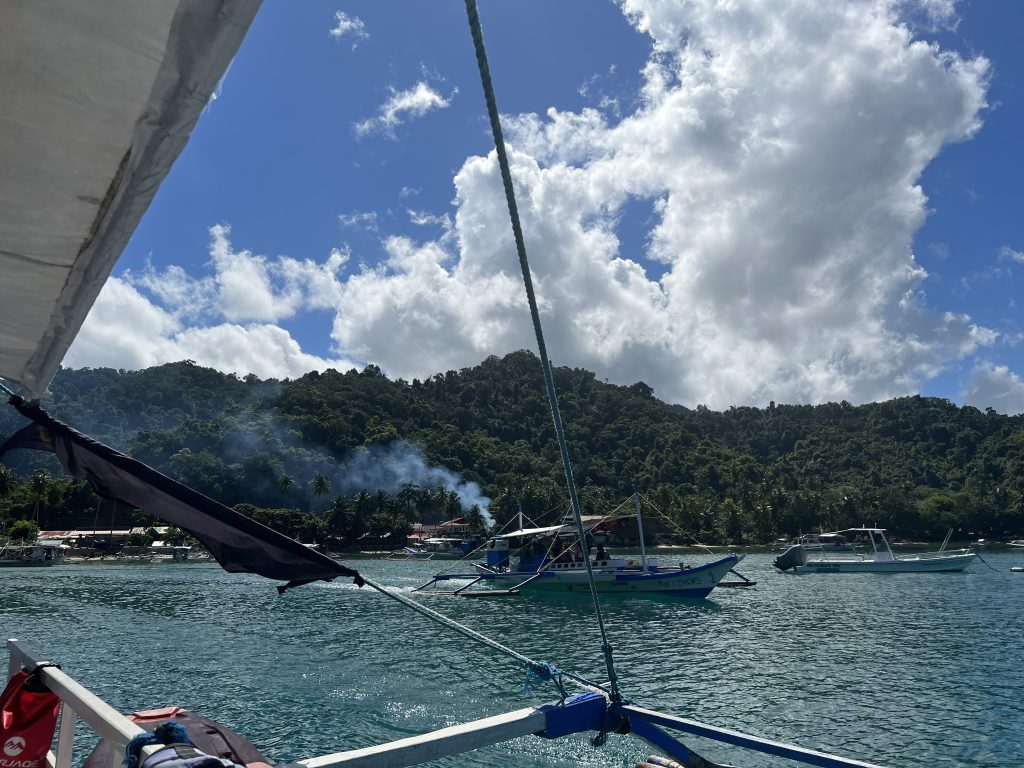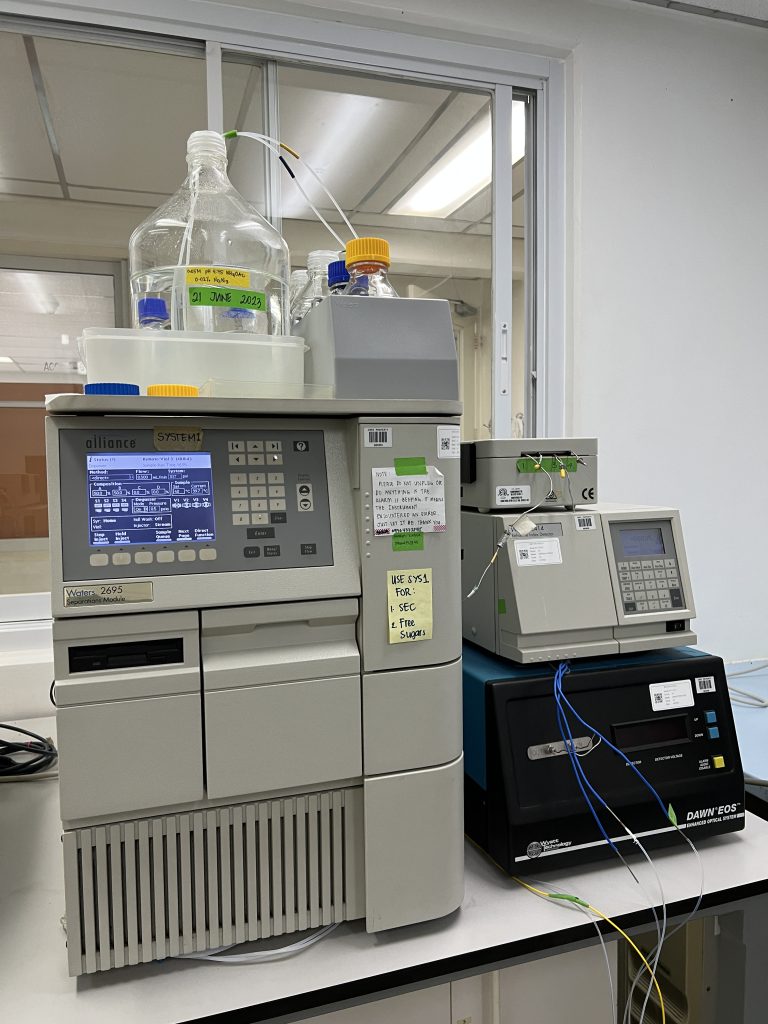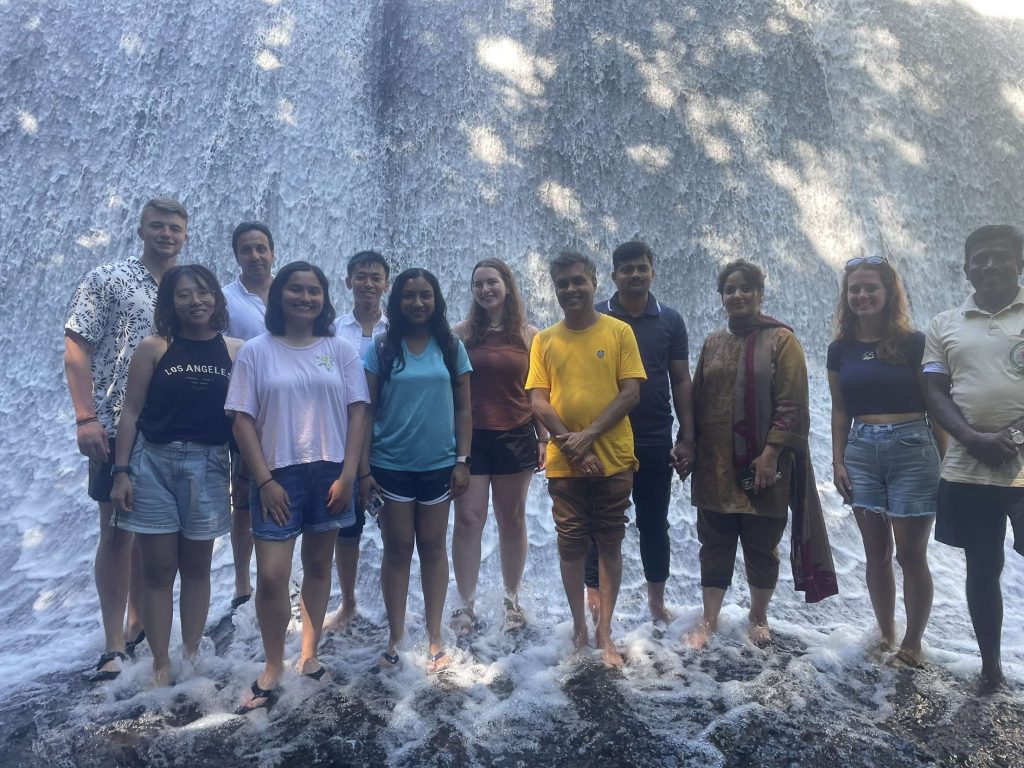The next morning in El Nido, Jessica and I took a tricycle back to town to grab lunch. We went to El Nido Brunch and sat in bean bags as we enjoyed our chicken panini and banana waffles with nutella. Then, we ran into Semaj and Chrishana and walked around the beach together. Although none of us wanted to leave, we had to head back for another bumpy and long ride to the airport. We arrived less than an hour before our 7:55 p.m. check-in time and quickly ate dinner. Thankfully, the flight and drive back to Manila were short, but we still arrived at IRRI around 11:30 p.m.

Despite having a jam-packed weekend and getting home late, we had to wake up before 6 a.m. the next day to do fieldwork. Although I was tired, I enjoyed being a farmer for a day! We got to perform multiple rice planting activities such as ploughing using a carabao, puddling (churning the soil with water using a hydrotiller), harrowing (breaking apart the soil by using a powertiller), grid marking (plotting where to transplant rice), riding a transplanter, hand-transplanting seedlings, and using a drum seeder. Rice can either be planted directly or transplanted. For direct seeding, the seeds are directly sown into field, which is what a drum seeder does. For transplanting, the seedlings are grown in a nursery before being transferred to a field. There are pros and cons to both methods. Direct seeding requires a lot less labor and is a quicker process, but the crops are more prone to weeds. Transplanting (which is the more common method in Asia) has better weed control and requires less seeds. However, it requires more workers and more expensive machinery. After we finished planting, we saw a drone fly over the field to do everything we just did: plant more seeds! It was fascinating to see how technology is being utilized to assist with such a laborious job. The rest of the day, I scrubbed the mud off my clothes, took a 4 hour nap, did laundry, and just relaxed.


On Wednesday, I finally got to perform an SEC experiment after only analyzing its data the past week. There are 2 parts to the experiment: gelatinization and debranching. Gelatinization is when starch granules swell up in heat and water, giving them a viscous/transparent texture. First, I added ethanol and NaOH to dissolve and isolate the starch. Then, I placed the samples on a hot plate and added water. Debranching is the breakdown of amylopectin into smaller, linear chains by hydrolyzing 1,6-α-d-glycosidic bonds. For the next part of the experiment, I added NaOAC buffer and isoamylase (the debranching enzyme). The samples were then incubated for a few hours and boiled to denature isoamylase. After centrifuging and removing the supernatant, the samples were transferred to eppendorf tubes with ion exchange resin that removes the excess ions. The samples were once again incubated and then transferred to SEC vials that were placed into the SEC machine. I had to wait overnight to obtain the results since there were multiple samples with replicates, each run taking 35 minutes.

On Thursday, I learned how to do a new experiment called Texture Profile Analysis (TPA). The purpose of this experiment is to quantify the texture/hardness of rice. Although certain rice lines can have many nutritional benefits, if the consumer does not like the texture, then it will not sell in the market. TPA aims to determine the texture of rice without having to do in vivo trials. I will dive more into depth about the experiment in next week’s post. On Friday, I also performed more TPA runs. After lab, Jazz and I ordered mutton biryani through a food delivery app called Grab. This is the same app we used to find transportation in Manila. I’m not used to using food delivery and transportation apps in the US, but it is very easy to use and is much cheaper than what DoorDash or Uber would cost. Another app we have used in the past to order food is called Food Panda. Los Baños offers a worldwide cuisine of food so it’s not hard to buy what you’re craving for.
The next morning, the girls and and Raquel (a Filipino undergraduate student from Jessica’s lab) went to the Saturday market again. After walking around for a bit, we were invited to a Bangladeshi cultural event hosted at UPLB. We tried a noodle dish and a lot of sweet treats with “Pomp and Circumstance” playing in the background as the UPLB orchestra was practicing for their graduation ceremony. We were still hungry so we headed over to a vegan restaurant called Vraja Cuisine. They had really nice rose lemon juice! After enjoying a good meal, we headed back to IRRI to play volleyball. The IWU gang was joined by some interns from Taiwan, and we had a casual match. Later that evening, to make up for the lack of meat during lunch, we decided to go to a Korean BBQ spot called Samgyupsalamat (a wordplay of samgyupsal, which means grilled pork belly in Korean, and salamat, which means thank you in Tagalog). At the restaurant, we could ask for unlimited meat and side dishes for just $10. We grilled beef, pork, and chicken at the center of our table. None of our stomachs got upset the next few days so we did a good job!

On Sunday, the IWU interns and a few other IRRI interns rode a jeepney to a neighboring city to explore their mall, SM Calamba. Although it wasn’t as big as the Mall of Asia, it was still a decent sized mall with 3 levels. I bought a few souvenirs, but I mostly spent my time window shopping. Later that afternoon, some of the others decided to watch the new Mission Impossible movie at the theatre inside while the rest of us kept wandering around. We tried delicious boba, played some claw machine games, and just strolled through shops. I also got a massage for the first time for less than $5! After several hours, we took a jeepney back to Los Baños and ate at Spice Jar once again.

















































